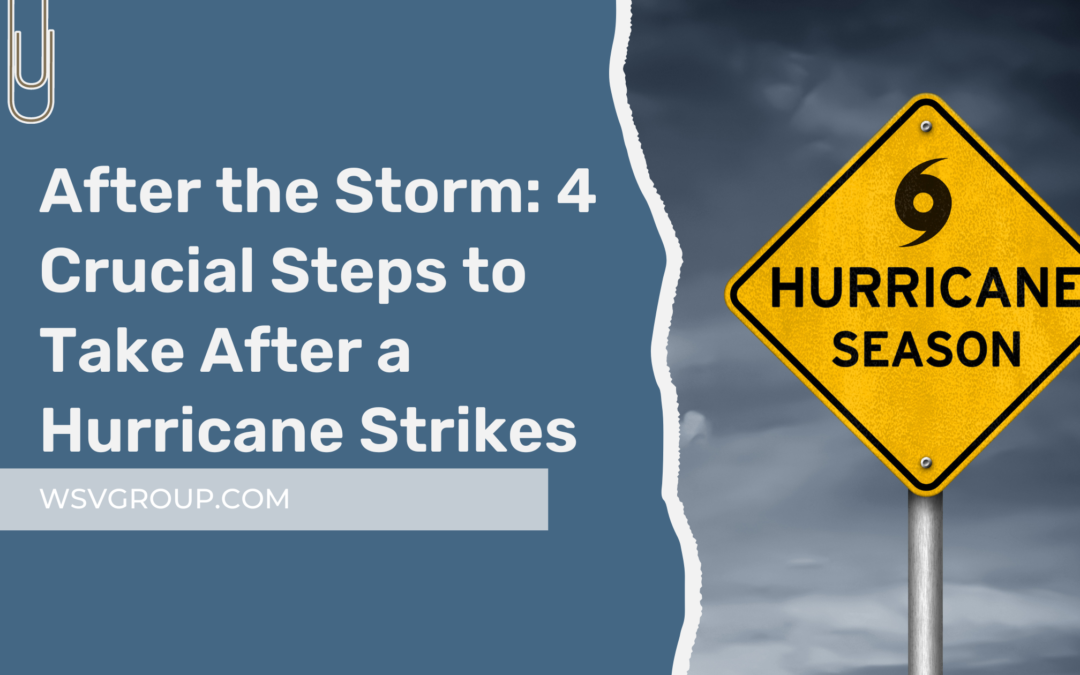In the aftermath of a hurricane, when the winds have finally subsided and the rain has stopped pouring, the challenges are far from over. The aftermath of a hurricane can be just as dangerous and daunting as the storm itself. Knowing what steps to take in the immediate aftermath can make a significant difference in ensuring safety, minimizing damage, and facilitating recovery. In this blog, we’ll discuss four important things to do after a hurricane has struck, guiding you through the crucial steps to navigate the post-hurricane period.
1. Prioritize Safety First
The aftermath of a hurricane can present a range of hazards, from fallen power lines to submerged debris. Your safety and that of your family should be your top priority. Here’s what you need to do:
– Stay Indoors: Avoid going outside until authorities declare it safe. Debris, downed power lines, and flooded areas pose serious risks.
– Check for Injuries: Attend to any injuries immediately. If medical attention is needed, call emergency services.
– Avoid Flooded Areas: If your area is flooded, avoid walking or driving through the water. Floodwaters can be contaminated and hide dangerous debris.
– Beware of Utility Hazards: Don’t use electrical appliances if you suspect water damage, and never handle downed power lines.
2. Assess and Document Damage
After ensuring safety, it’s essential to assess the extent of the damage to your property. This documentation will be crucial for insurance claims and disaster relief assistance:
– Take Photos and Videos: Document the damage to your property and belongings. This visual evidence will be valuable when dealing with insurance claims.
– Make a List: Create an inventory of damaged items, including their approximate value. This will streamline the insurance process.
– Contact Your Insurance Company: Report the damage to your insurance company as soon as possible. They will guide you through the claims process.
3. Initiate Clean-Up and Repairs
Once you’ve documented the damage and notified your insurance company, it’s time to start the clean-up and repair process:
– Mitigate Further Damage: Cover broken windows, leaks, or exposed areas with tarps or boards to prevent additional damage.
– Remove Debris: Safely clear debris from your property to prevent accidents and further damage. Be cautious while doing so, and consider seeking professional help for larger debris.
– Begin Drying Out: If your property experienced flooding, start the drying-out process as soon as possible to prevent mold growth. Open windows and use fans if electricity is available.
4. Seek Assistance and Support
Recovering from a hurricane is a daunting task that often requires help from various sources:
– Contact Disaster Relief Agencies: Reach out to local and national disaster relief organizations for assistance. They can provide resources, guidance, and support during your recovery.
– Communicate with Neighbors: Check on your neighbors and offer help if needed. Community support can make a significant difference during challenging times.
– Stay Informed: Keep yourself updated with official information from local authorities and government agencies regarding relief efforts, assistance programs, and safety guidelines.
Recovering from a hurricane is a multi-step process that requires patience, resilience, and careful planning. By prioritizing safety, assessing damage, initiating clean-up and repairs, and seeking assistance, you can navigate the challenging aftermath of a hurricane and work towards rebuilding your life and property. Remember, you’re not alone—support from your community and various organizations is available to help you on the path to recovery.

